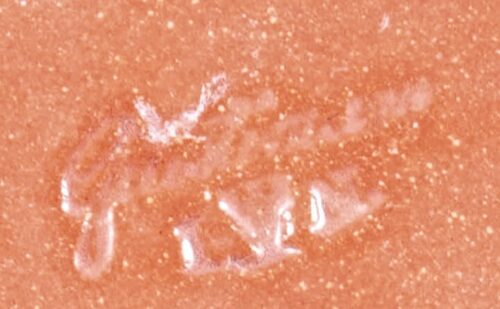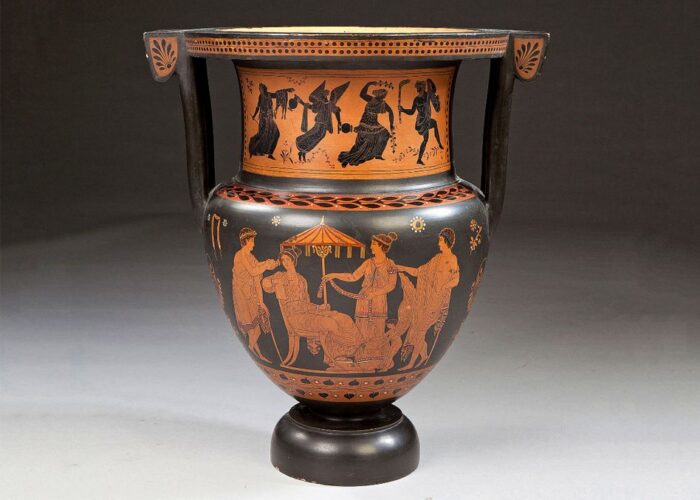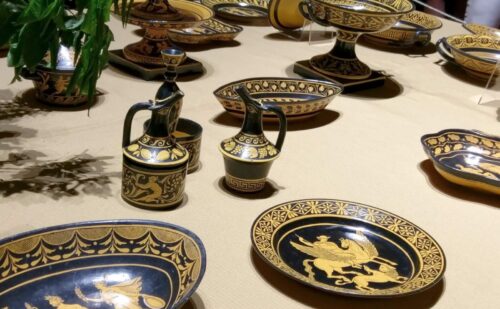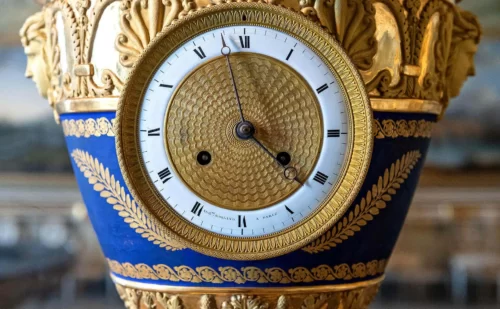Ceramics from the Giustiniani Manufacture
History of the Giustiniani Manufacture, a Neapolitan company of neoclassical ceramics known for its reproduction of ancient pottery
THE VASES FROM THE GIUSTINIANI MANUFACTURE ARE VISIBLE AT: Palatine Library
History of Giustiniani manufacture
The Giustiniani Manufacture descends from the ceramic tradition of Cerreto Sannita, in the province of Benevento. It was founded in Naples around 1760 by Nicola Giustiniani, and in the early days produced cream-colored earthenware and majolica, decorated with enamel colors, as well as beautiful majolica tiles (for example those of the floor of the chapel of S. Maria dei miracoli in the church of the Jesus of the nuns in Naples). Business prospered under the direction of Biagio Giustiniani, grandson of the founder, at the beginning of the nineteenth century. (especially after the closure of the royal porcelain factory in Naples, which took place in 1821), with the production of a graceful tableware, figurines of characters in period clothes, life-size busts, garden statues, flower boxes, reproductions of ancient statues, etc. The factory, however, is particularly known for the beautiful copies of classical vases and the adaptations that of their shapes and ornaments were made for certain pieces such as the large “Etruscan” table service, now in the Museo Duca di Martina alla Floridiana in Naples. (The Del Vecchio factory produced similar copies of classical vases.)
Starting in 1829, a variety of porcelain was produced, but in 1848, shortly after Biagio Giustiniani's death, the factory went bankrupt and the pieces in stock were sold. Two sons, however, continued the business on a smaller scale, until Michele Giustiniani, great-grandson of the founder, reconstituted the company first in partnership with an uncle and then, from 1870, on his own. Under his direction, the factory produced a wide variety of objects of use and ornaments, including some imitations of Renaissance majolica, and his pieces won several awards in international exhibitions. From a commercial point of view, however, the company faced a new bankruptcy, due to the excessive expansion of production, and had to close shortly after 1885. The word "Giustiniani" imprinted on the pieces was the main trademark .

The Giustiniani mark
Discover the collections of artistic objects of the Royal Palace of Caserta
They remain extraordinary despite 200 years of looting, theft and damage




